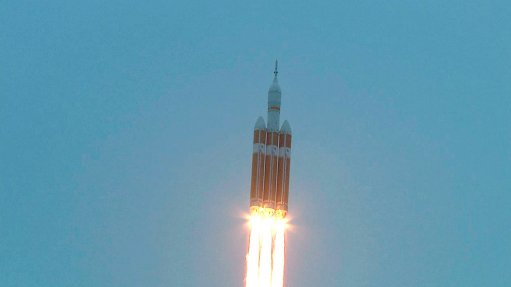
The Delta IV rocket carrying the Orion lifts off
Photo by: NASA
The prototype of America’s latest manned space craft, Orion, was launched on its first flight at 14:05 South African time on Friday. The vessel was carried aloft from the National Aeronautics and Space Administration’s (Nasa’s) Kennedy Space Flight Centre at Cape Canaveral in the US state of Florida by a Delta IV heavy rocket. The flight is planned to last for a little more than four hours, with splashdown scheduled for about 18:30 South African time.
Because this is the first flight of a new spacecraft, the Orion is unmanned. The purpose of this flight is to test essential technologies, such as the heat shield and the landing parachutes. The spaceship’s orbit will extend as far as 6 000 km above the Earth.
The Orion is intended as a space exploration vessel and not an Earth-to-orbit transport system. All being well, it take its crews to asteroids, the Moon and, ultimately, forms part of a Mars ship.
As a result, it reverts in design philosophy to the conical space capsule concept employed by Nasa in its Mercury, Gemini and Apollo programmes, instead of the “space plane” concept of the Space Shuttle. Consequently, the Orion will, after re-entry, parachute to the Earth’s surface and splashdown in the sea.
On exploration missions it will carry a crew of four, but could carry more on short-range, short endurance missions. It is thus significantly larger than Nasa’s previous space capsules.
Orion will re-enter the atmosphere at a speed of about 30 000 km/h, close to the speed of a spacecraft returning from the Moon. It was to achieve this speed that Orion’s maximum orbit is so high (the International Space Station orbits at an average height of just 400 km).
The spacecraft successfully completed its first orbit at about 15:56 South African time. It is programmed to splashdown into the eastern Pacific Ocean, where it will be retrieved by the US Navy amphibious ship USS Anchorage.